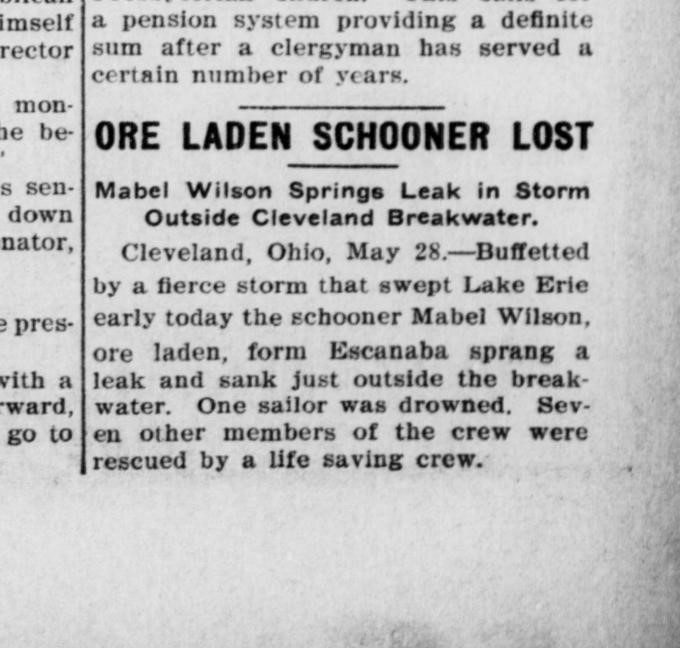Let’s face it, shipwrecks are sexy. They evoke in us a sense of curiosity which oftentimes leads us to speculate about their history.
Why did the ship fail to make landfall?
Who was on board?
What stories haunt their sunken remains?
All of these questions, plus many more, spark the curiosity of recreational divers and community members, who cruise the waters of Ohio, in search of answers to lost vessels. Shipwrecks are protected by national and state laws which restrict salvage activities, and work to preserve site environments. Section 1506.36 of the Ohio Revised Code was created in 1992 to protect abandoned, submerged properties located within Ohio waters, and to allocate responsibility of shipwreck sites to the Ohio History Connection and the Ohio Department of Natural Resources.
Over one hundred shipwrecks have been located in Ohio waters by dive teams, cultural resource management (CRM) groups, and local community members. As a member of the Ohio History Service Corps, my first priority at the Ohio History Connection was to collect all available locations, history, and site descriptions of Ohio shipwrecks, and to enter them into the Ohio Shipwreck Database Inventory, created by Linda Pansing and Nancy Parsons of the Ohio History Connection. This will not only serve to document currently located shipwrecks but will also be utilized to collect and store future shipwreck discoveries made by divers and CRM groups.
Why is the preservation of shipwrecks so important? Well, along with their mysterious allure in the dark waters of lakes and oceans, shipwrecks provide valuable information about their part in American history.
Shipwrecks can also express the relationship between nature, and the fragility of human endeavor. Two brothers, James Edward Gotham and Myron Wheeler Gotham, captained the Mabel Wilson and a steamer, Sylvanus J. Macy. The Macy often towed the Wilson into ports along the coast of Ohio. During a severe storm of 1902, while towing the Wilson, the Macy broke away from its towline, and was lost, along with the lives of Myron Gotham and his crew. Resilient, and perhaps a risk-taker, James Myron continued to captain the Wilson after his brother’s death, until 1906, when his ship encountered the same stormy fate. If not for the courageous efforts of the Cleveland Life-Saving Service, under Captain Charles Motley to save all but one, James Myron and his crew would also have been taken by the gales of Lake Erie.
Further reinforcing the importance of shipwreck preservation is the interest it has given me in pursuing the stories of the early life-savers of distressed vessels. It was with this research that I became invested in establishing an Ohio Historical Marker for the Cleveland Life-Saving Service, which would recognize the heroism of the pre-Coast Guard surfmen who saved many of the crew and passengers of the very ships wrecked within Lake Erie. In future blog posts, I will share a brief history of the Cleveland Life-Saving Service, and highlight one of its most under-recognized Keepers.
For More Information on Shipwrecks, Diving, and Shipwreck Law:
http://codes.ohio.gov/orc/1506.36
http://www.ohiomast.org/ourstory/
http://greatlakes.bgsu.edu/
Wachter, Georgann and Michael, Erie Wrecks East, Erie Wrecks West, Erie Wrecks & Lights. Avon Lake, 2001-2009.
Christine Chitwood
AmeriCorps Member
Ohio History Connection
Archaeology Collections and Historic Preservation Office